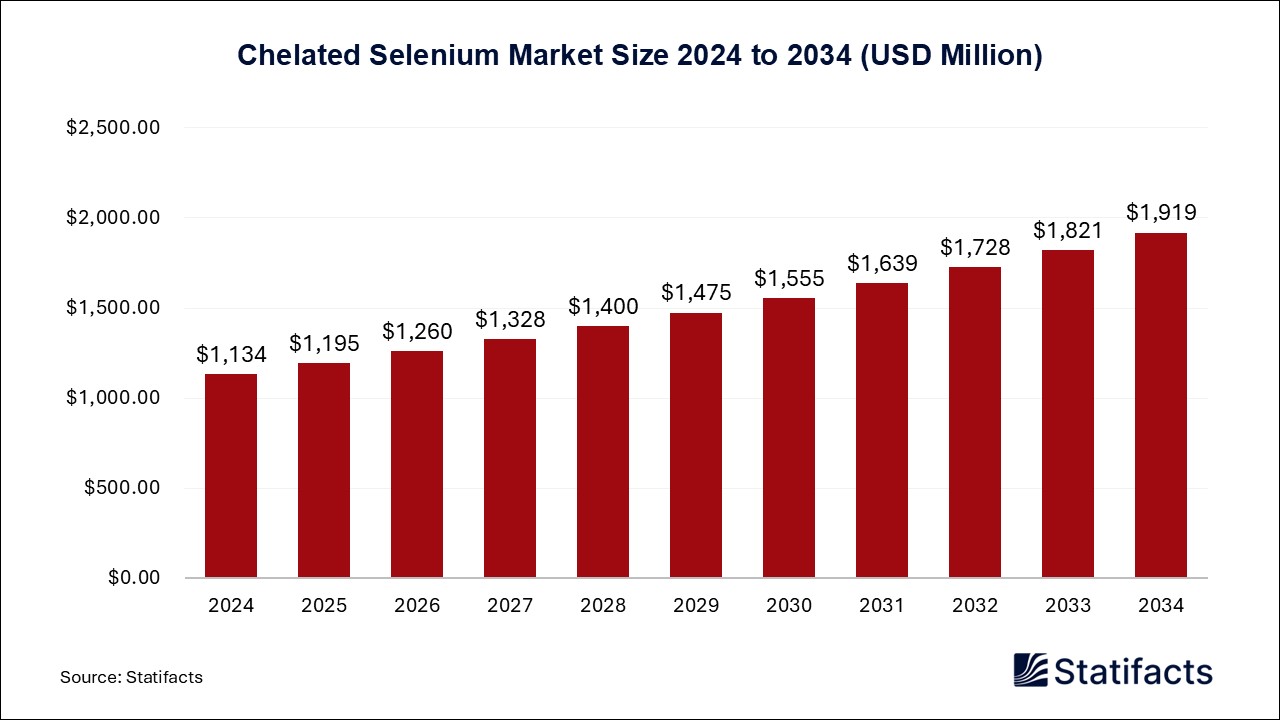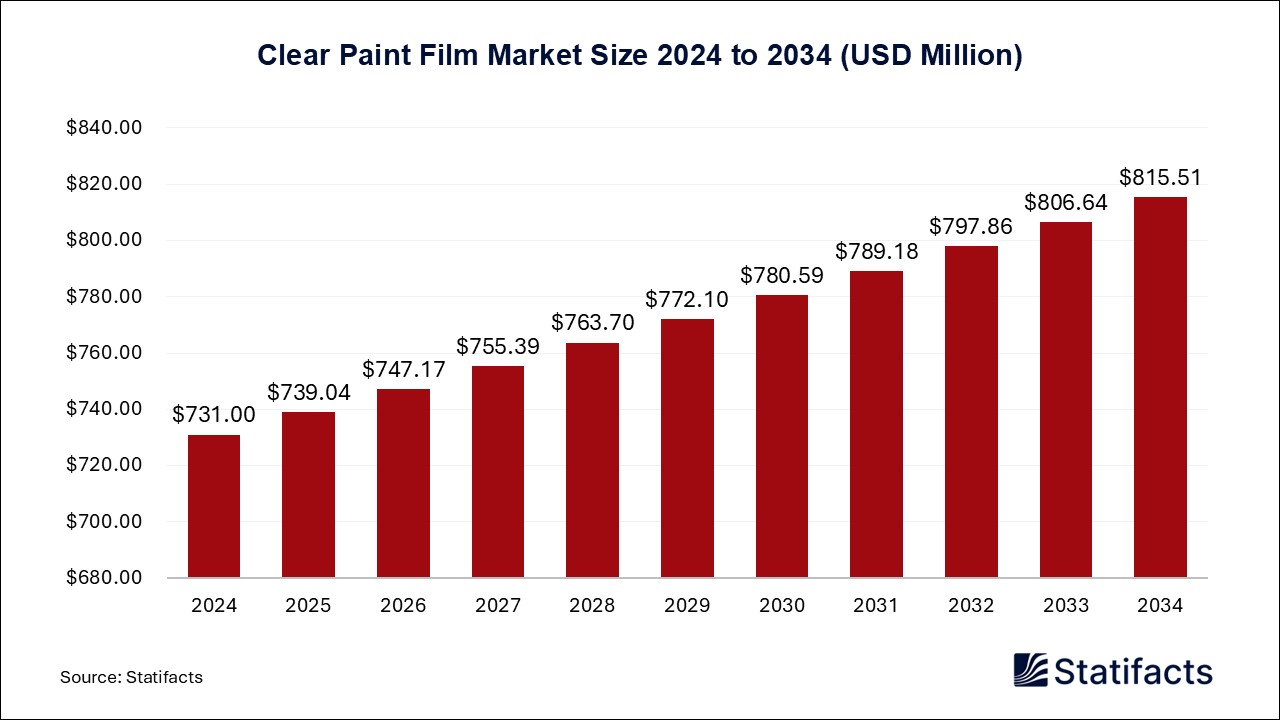Last Updated: 01 Aug 2025
Source: Statifacts
By clicking “Accept All Cookies” you agree to the storing of cookies on your device to enhance site navigation, analyze site usage, and assist in our marketing efforts.
Privacy PolicyAirline Catering Meal Market (By Flight Type: Full-Service Carrier, Low-Cost Carrier, Other; By Airlines: Large Airlines, Medium Airlines, Small Airlines; By Airline Class: Economy, Premium Economy, Business, First Class; By F&B Type: Meal, Bakery & Confectionery, Beverages, Others; By Region: North America, Europe, Asia Pacific, Latin America, Middle East & Africa) Industry Size, Share, Growth, Trends 2025 to 2034.
The global airline catering meal market size surpassed USD 19.6 billion in 2024 and is predicted to reach around USD 35.1 billion by 2034, with a CAGR of 6% from 2025 to 2034. Expanding long-haul & international flights, increasing passenger numbers and air traffic volume, adoption of health-conscious and sustainable meal options, and rising adoption of pre-order meal systems are driving the growth of the airline catering meal market. Asia Pacific dominated the global market in 2024, while Europe is anticipated to grow at the fastest rate in the market during the forecast period.
| Reports Attributes | Statistics |
| Market Size in 2024 | USD 19.6 Billion |
| Market Size in 2025 | USD 20.78 Billion |
| Market Size in 2031 | USD 29.47 Billion |
| Market Size by 2034 | USD 35.1 Billion |
| CAGR 2025 to 2034 | 6% |
| Base Year | 2024 |
| Forecast Period | 2025 to 2034 |
The airline catering meal market refers to the production, distribution, and use of airline catering meals, which is the provision of food and beverage services on commercial flights. Catering of airlines offers exposure to a diverse clientele, including business travelers, tourists, and frequent flyers. Positive experiences with the meals provided can lead to brand recognition and loyalty among passengers. This helps the airlines minimize food waste, simplifies in-flight operations, and gives passengers a tailored experience. It can lead to higher profit margins than catering for other events or venues. Airline meals tend to be more thoroughly seasoned to increase their flavor. Food safety is paramount in the airline catering industry. In-flight catering plays an important role in improving the overall experience for passengers and meeting their specific needs.
According to a report published in January 2025, China’s cold chain logistics sector posted robust growth in 2024, with surging demand for transport vehicles and busy air and railway activity, and market insiders said that the growth was closely related to the nation’s increasing consumption vitality. China’s demand for cold chain logistics in 2024 reached 365 million tons, a year-on-year increase of 4.3 percent, the Global Times learned from the Cold Chain Logistics Committee of the China Federation of Logistics & Purchasing.
Artificial intelligence (AI) based solutions like Internet of Things (IoT), machine learning, and computer vision devices allow airlines to enhance their ability to track food from production to consumption, reducing risks associated with spoilage and contamination. AI is a game changer in the aviation industry, improving safety by identifying risks and analyzing real-time flight data. Predictive maintenance ensures optimal aircraft conditions, reducing the chances of mechanical failures. AI also improves fuel efficiency through optimized flight routes, cutting carbon emissions and operational costs.
With its ability to analyze large datasets, AI streamlines logistics operations, reduces congestion, and minimizes accidents. Additionally, AI reroutes vehicles to avoid congested areas. It ensures faster responses to emergencies by clearing paths for emergency vehicles. AI-based custom food recommendations can allow airlines to customize menus based on customers' preferences and dietary restrictions.
Growing demand for premium air travel services: The growing demand for premium air travel services contributes to the growth of the market. It facilitates tourism, trade, and connectivity, generates economic growth, provides jobs, improves living standards, alleviates poverty, provides a lifeline for remote communities, and allows a rapid response when disasters occur. Long-haul airlines like Qantas, Singapore, and United Airlines have embraced the premium service, which has proven more popular than business and more profitable than economy class.
Rising adoption of pre-order meal systems: Pre-order meal systems save customers time by avoiding long queues at restaurants or food establishments. They can place their order and have their food ready for pick-up or delivery at a designated time, eliminating the need to wait in line. The whole purpose of pre-order meal systems is to make it easier and more convenient for customers to place orders through a website or mobile app. It simplifies the ordering process for customers, enabling them to browse the online menu.
Complex regulatory environments: Compliance with regulations may require significant resources, including time and money, which may be mainly burdensome for small businesses. Adhering to complex regulatory requirements may involve administrative overhead, potentially diverting focus from core business activities. Disadvantages of a regulatory framework include slowed competitiveness, negative effect on small businesses, regulating activities within an economy or a region can be costly due to the processes involved, and imposing regulatory controls and checks can be time-consuming.
Rising operational expenses in catering services: Food is the biggest variable cost for restaurants, and labor is the biggest semi-variable cost. Both of these costs can be calculated by using the prime cost formula. This formula calculates the sum of labor costs and CoGS. The face of rising costs in the food services is a challenge. In the hospitality industry, service-focused employee wages may make up a large chunk of fixed costs. From the concierge to cooks to housekeeping, there are many staff members on the payroll at all times.
Technological innovation: One of the most significant advancements in airline catering meals is the adoption of automated meal preparation systems. These state-of-the-art systems leverage robotics and artificial intelligence to streamline the process of meal assembly and packaging. Technology integration includes using mobile apps for ordering, online booking platforms, digital payment systems, and even AI-driven analytics to better predict customer needs. Food packaging innovations use advanced sensors and artificial intelligence to measure spoilage indicators like pH balance, biogenic amines, and bacterial growth. This allows dynamic and up-to-the-minute tracking of food freshness.
Shahreyar Nawabi, Chief Executive Officer of Emirates Flight Catering, said, “Our expertise in large-scale catering operations and commitment to culinary excellence mark us the ideal choice for an event of this magnitude.” “Most importantly, this partnership further cements our capacity to seamlessly manage complex catering operations outside the scope of inflight catering.”
The full-service carrier segment held a dominant presence in the airline catering meal market in 2024. The catering assistant provides catering services like the handling of logistics to supply fresh ingredients, prepares, and delivers in-flight meals to aircraft. Full service carriers (FSCs) offer multi-class service, loyalty program membership, access to airport premium lounges, connecting flights, and other perks.
The low-cost carrier segment is expected to grow at the fastest rate in the market during the forecast period of 2025 to 2034. Low-cost carriers are known for offering significantly lower ticket prices compared to full-service airlines, making air travel more accessible to a broader audience. Many low-cost carriers frequently offer promotional fares and discounts, allowing travelers to find even greater savings. A low-cost carrier has a lower operating cost structure than other airlines.
The large airline segment accounted for a considerable share of the airline catering meal market in 2024. Making an aircraft design larger can also enhance the overall fuel efficiency and man-hours for transporting a given load, while a greater space is available for transporting lightweight cargoes or giving passengers room to move around.
The medium airlines segment is projected to experience the highest growth rate in the market between 2025 and 2034. Medium airlines means an airline equipped for the carriage of passengers and having a certificated maximum carrying capacity of more than 39 but not more than 89 passengers.
The economy segment led the airline catering meal market. Economy class generally includes a free checked baggage allowance, although the weight and number of bags permitted may vary by airline. Passengers generally have standard check-in and boarding procedures, without the priority that business class offers.
The premium economy segment is set to experience the fastest rate of market growth from 2025 to 2034. Premium economy offers exclusive amenities and perks, including noise-cancelling headphones, more leg room, and premium meals. Premium economy provides a more comfortable experience with spacious seating, priority boarding, and better meal options. Premium economy offers an elevated experience beyond economy class.
The meal segment registered its dominance over the airline catering meal market in 2024. The meal F&D type benefits include helping the digestive system function, supporting healthy pregnancies and breastfeeding, lower the risk of disease, strengthening bones, boosting immunity, supporting muscles, keeping skin, teeth, and eyes healthy, and may help you live longer.
The bakery and confectionery segment is anticipated to grow with the highest CAGR in the market during the studied years. Bakery and confectionery play an important role in airline catering meals, in which bakery is an establishment that produces and sells flour-based food baked in an oven, like pastries, cakes, breads, and pies. Confectionery is the art of making confections, which are food items that are rich in sugar and carbohydrates.
Asia Pacific dominated the global airline catering meal market in 2024. Expanding long-haul and international flights, increasing passenger numbers and air traffic volumes, adoption of health-conscious and sustainable meal options, and growing demand for premium air travel services are driving the growth of the market in the Asia Pacific region.
Europe is anticipated to grow at the fastest rate in the market during the forecast period. Technology adoption roadmap, business model innovations, digital transformation and smart solutions, shift toward sustainability & green materials, and investing in infrastructure projects contributing to the growth of the airline catering meal market in the European region.
About several countries where it operates. It operates in the general surgery, plastics, gynecology, urology, spine, sports medicine, orthopedics, and wound care sectors around the world.
Over 20 countries worldwide where it operates. It operates in the Health Care, Homes, and Materials sectors around the world.
About 60 countries where it operates. It operates in the biotechnology, life sciences, and diagnostics sectors around the world.
| Regions | Shares (%) |
| North America | 30% |
| Asia Pacific | 35% |
| Europe | 25% |
| LAMEA | 10% |
| Segments | Shares (%) |
| Full-Service Carrier | 55% |
| Low-Cost Carrier | 40% |
| Other | 5% |
| Segments | Shares (%) |
| Large Airlines | 60% |
| Medium Airlines | 30% |
| Small Airlines | 10% |
| Segments | Shares (%) |
| Economy | 70% |
| Premium Economy | 10% |
| Business | 15% |
| First Class | 5% |
| Segments | Shares (%) |
| Meal | 60% |
| Bakery & Confectionery | 15% |
| Beverages | 20% |
| Others | 5% |
Published by Vidyesh Swar
| Flight Type | 2024 | 2025 | 2026 | 2027 | 2028 | 2029 | 2030 | 2031 | 2032 | 2033 | 2034 |
|---|---|---|---|---|---|---|---|---|---|---|---|
| Full-Service Carrier | 10780 | 11,364.47 | 11,980.27 | 12,629.06 | 13,312.57 | 14,032.63 | 14,791.18 | 15,590.24 | 16,431.94 | 17,318.51 | 18,252.32 |
| Low-Cost Carrier | 7840 | 8,372.73 | 8,941.16 | 9,547.66 | 10,194.75 | 10,885.13 | 11,621.64 | 12,407.36 | 13,245.52 | 14,139.59 | 15,093.26 |
| Other | 980 | 1,038.80 | 1,101.13 | 1,167.20 | 1,237.23 | 1,311.46 | 1,390.15 | 1,473.56 | 1,561.97 | 1,655.69 | 1,755.03 |
| Airlines | 2024 | 2025 | 2026 | 2027 | 2028 | 2029 | 2030 | 2031 | 2032 | 2033 | 2034 |
|---|---|---|---|---|---|---|---|---|---|---|---|
| Large Airlines | 11760 | 12,424.05 | 13,125.45 | 13,866.28 | 14,648.77 | 15,475.24 | 16,348.15 | 17,270.10 | 18,243.82 | 19,272.22 | 20,358.36 |
| Medium Airlines | 5880 | 6,274.35 | 6,694.86 | 7,143.24 | 7,621.32 | 8,131.06 | 8,674.53 | 9,253.94 | 9,871.66 | 10,530.18 | 11,232.20 |
| Small Airlines | 1960 | 2,077.60 | 2,202.26 | 2,334.39 | 2,474.45 | 2,622.92 | 2,780.30 | 2,947.12 | 3,123.94 | 3,311.38 | 3,510.06 |
| Region | 2024 | 2025 | 2026 | 2027 | 2028 | 2029 | 2030 | 2031 | 2032 | 2033 | 2034 |
|---|---|---|---|---|---|---|---|---|---|---|---|
| North America | 5880 | 6,191.25 | 6,518.68 | 6,863.11 | 7,225.41 | 7,606.47 | 8,007.26 | 8,428.75 | 8872 | 9,338.09 | 9,828.17 |
| Asia Pacific | 6860 | 7,333.93 | 7,840.03 | 8,380.46 | 8,957.53 | 9,573.67 | 10,231.49 | 10,933.80 | 11,683.54 | 12,483.90 | 13,338.23 |
| Europe | 4900 | 5,173.22 | 5,461.59 | 5,765.95 | 6,087.16 | 6,426.16 | 6,783.93 | 7,161.49 | 7,559.94 | 7,980.42 | 8,424.15 |
| LAMEA | 1960 | 2,077.60 | 2,202.26 | 2,334.39 | 2,474.45 | 2,622.92 | 2,780.30 | 2,947.12 | 3,123.94 | 3,311.38 | 3,510.06 |
Last Updated: 01 Aug 2025
Source: Statifacts
| Subsegment | 2024 | 2025 | 2026 | 2027 | 2028 | 2029 | 2030 | 2031 | 2032 | 2033 | 2034 |
|---|---|---|---|---|---|---|---|---|---|---|---|
| Full-Service Carrier | 10780 | 11,364.47 | 11,980.27 | 12,629.06 | 13,312.57 | 14,032.63 | 14,791.18 | 15,590.24 | 16,431.94 | 17,318.51 | 18,252.32 |
| Low-Cost Carrier | 7840 | 8,372.73 | 8,941.16 | 9,547.66 | 10,194.75 | 10,885.13 | 11,621.64 | 12,407.36 | 13,245.52 | 14,139.59 | 15,093.26 |
| Other | 980 | 1,038.80 | 1,101.13 | 1,167.20 | 1,237.23 | 1,311.46 | 1,390.15 | 1,473.56 | 1,561.97 | 1,655.69 | 1,755.03 |
| Subsegment | 2024 | 2025 | 2026 | 2027 | 2028 | 2029 | 2030 | 2031 | 2032 | 2033 | 2034 |
|---|---|---|---|---|---|---|---|---|---|---|---|
| Large Airlines | 11760 | 12,424.05 | 13,125.45 | 13,866.28 | 14,648.77 | 15,475.24 | 16,348.15 | 17,270.10 | 18,243.82 | 19,272.22 | 20,358.36 |
| Medium Airlines | 5880 | 6,274.35 | 6,694.86 | 7,143.24 | 7,621.32 | 8,131.06 | 8,674.53 | 9,253.94 | 9,871.66 | 10,530.18 | 11,232.20 |
| Small Airlines | 1960 | 2,077.60 | 2,202.26 | 2,334.39 | 2,474.45 | 2,622.92 | 2,780.30 | 2,947.12 | 3,123.94 | 3,311.38 | 3,510.06 |
| Subsegment | 2024 | 2025 | 2026 | 2027 | 2028 | 2029 | 2030 | 2031 | 2032 | 2033 | 2034 |
|---|---|---|---|---|---|---|---|---|---|---|---|
| North America | 5880 | 6,191.25 | 6,518.68 | 6,863.11 | 7,225.41 | 7,606.47 | 8,007.26 | 8,428.75 | 8872 | 9,338.09 | 9,828.17 |
| Asia Pacific | 6860 | 7,333.93 | 7,840.03 | 8,380.46 | 8,957.53 | 9,573.67 | 10,231.49 | 10,933.80 | 11,683.54 | 12,483.90 | 13,338.23 |
| Europe | 4900 | 5,173.22 | 5,461.59 | 5,765.95 | 6,087.16 | 6,426.16 | 6,783.93 | 7,161.49 | 7,559.94 | 7,980.42 | 8,424.15 |
| LAMEA | 1960 | 2,077.60 | 2,202.26 | 2,334.39 | 2,474.45 | 2,622.92 | 2,780.30 | 2,947.12 | 3,123.94 | 3,311.38 | 3,510.06 |
This market involves food and beverage services provided to passengers during flights, ranging from full meals to snacks and beverages. Demand is driven by rising air travel, heightened customer expectations, and airline strategies to differentiate through dining quality.
Airlines increasingly offer personalized menus—vegan, gluten free, regional specialties—and collaborate with chefs for gourmet experiences. Technology, including AI for demand forecasting and automation in kitchens, improves delivery efficiency and reduces waste.
Eco-friendly packaging, plant-based meal options, and low-waste initiatives are becoming mainstream as sustainability and health consciousness rise. Airlines are sourcing locally and offering clean-label ingredients to align with this shift.
While economy-class remains the largest segment by volume, premium cabins drive innovation and higher meal spend. North America and Europe lead in established services, while Asia Pacific is expanding fastest with growth in both traditional and low-cost carriers.
Operational hurdles include tight turnaround schedules, regulatory food-safety compliance, and logistical complexity across airports. However, opportunities abound in premium dining, tech-driven personalization, and expansion in emerging aviation markets.
To get full access to our Market Insights, you need a Professional Account or a Business Suite.

You will receive an email from our Business Development Manager. Please be sure to check your SPAM/JUNK folder too.

You will receive an email from our Business Development Manager. Please be sure to check your SPAM/JUNK folder too.

Our customers work more efficiently and benefit from



